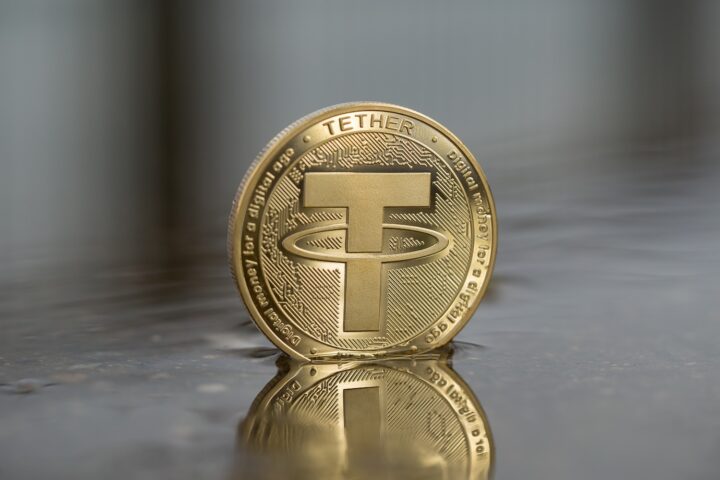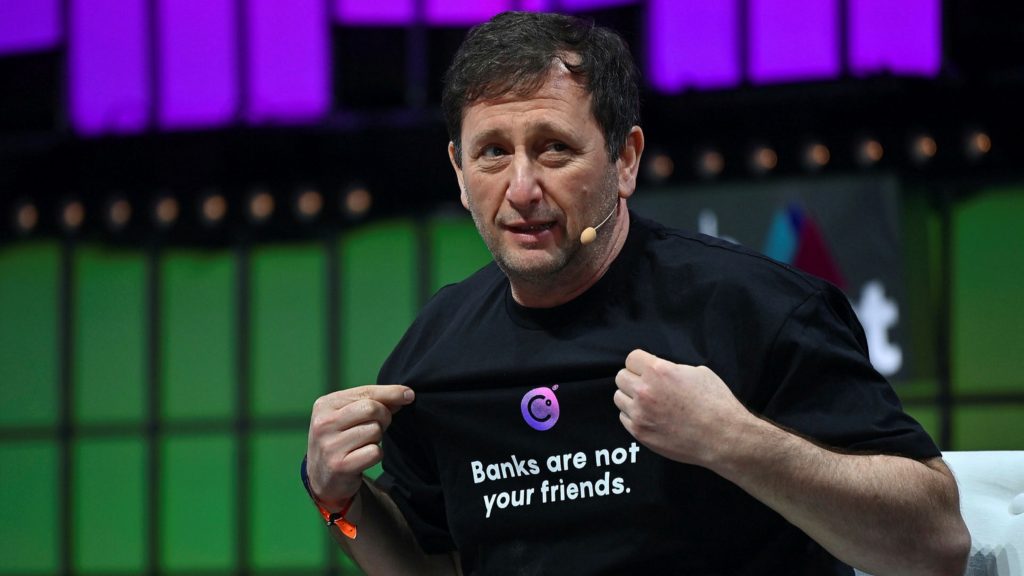Zebu Live, the United Kingdom’s leading crypto, blockchain and Web3 conference, has announced the successful conclusion of its two-day flagship event.
The conference took place in Kensington from Sept. 22 to 23, and saw over 2,000 members of the Web3 space in attendance. Over 150 of the industry’s most prominent and prolific pioneers shared their insights through speeches, workshops and panel discussions.
Some highlights of the event included a keynote speech from MP Matt Hancock, in which he stated: “The Queen was a supporter of crypto assets. […] She supported the British Blockchain Association. […] Now, the key is to use the opportunity of a new government to have a fresh start in the attitude and approach to digital assets, to cryptocurrencies, and to the use of the underlying blockchain technology.”
Highlights from Zebu Live also included a fireside chat with serial entrepreneur Steven Bartlett, who stated: “I think industries where centralization and a lack of transparency and a lack of verification are problems, those are going to change rapidly over the next few years due to blockchain […] So I don’t think Web3 is going to eat up every industry, but there is going to be a real war against industries which have those problems.”
In addition, the event featured numerous panel discussions with thought leaders and visionaries within Web3, a selection of which are highlighted below:
- The future of the crypto exchange
- Fashion enters the Metaverse
- Integrating NFTs into gaming ecosystems
- Bringing the power back to the artists with music NFTs
- Women in Web3
- Optimizing rewards and minimizing risk with DeFi
There were also a number of spotlight presentations throughout the event, from leading projects and organizations within the industry. These include:
- Arrested development: The risks and opportunities in the private DeFi space with Panther Protocol
- Bringing music into Web3 with Dancing Seahorse
- Scaling Metaverses and Web3 apps with Cudos
- Designing a Web3 strategy with Tezos
- Swapsicle: A DEX but with more flavor
- Stablecoins: Mass adoption vs. decentralization with NEAR Protocol
The full recording of the first day’s main stage talks from Zebu Live can be found here, and the full recording of the second day main stage talks can be found here.
Commenting on the event, Zebu Digital CEO and founder of Zebu Live Harry Horsfall stated: “We couldn’t be happier with how things went with Zebu Live. To see such an amazing turnout from so many distinguished individuals and organisations — both in Web3 and Web2 — is a testament to how prolific the interest is around this new frontier industry. The adoption of blockchain and Web3 cannot be stopped, and it’s the speakers, contributors and attendees present at Zebu Live who are pushing the boundaries of this burgeoning space. Next year is going to be even bigger and better — watch this space!”
At the end of the second day, the Zebu Live team announced that the third installment of its flagship event will be taking place on Oct. 5 and 6, 2023. Super early bird tickets are now on sale for the event, which is set to feature more speakers and attendees than ever before.
Follow Crypto Intelligence on Google News to never miss a story
Crypto companies were undeterred by initial failure to obtain licences to operate in Britain and were submitting new applications, the Financial Conduct Authority said on Thursday.
The FCA has been criticised by lawmakers and the crypto sector for being slow in processing licence applications and for rejecting swathes of applicants despite the UK government’s push to make London a global crypto hub.
“It’s no surprise that I still see many crypto firms still seeking to get licences here in the UK even though some have been denied those licences at the first pass,” FCA executive director for competition and consumers Sheldon Mills told a City & Financial conference.
“They know we have a good system of regulation and if they meet our standards that’s important for every jurisdiction that they seek to apply for around the world,” Mills said.
“That is a benefit to the UK economy and UK financial service industry, and is good for competition, inward investment and growth.”
Crypto firms are scrutinised by the FCA for their ability to stop their operations being used for money laundering or financing terrorism.
In March, the FCA said that 90% of crypto firms seeking approval for their anti-money laundering controls have either withdrawn their applications or been refused because they could not meet the standards.
Mills said 95 people have been hired to the watchdog’s authorisations team and the pending caseload has fallen by 40%.
“Over time, we expect faster, better decisions will support us in bringing down the costs of the regulatory system,” Mills said.
Jean-Marie Mognetti, chief executive of crypto asset manager CoinShares, said the company chose to list in European Union member state Sweden because Britain and the FCA were “not very keen” to see any crypto companies in London.
Mognetti said the European Union’s new set of ‘MiCA’ rules for fully licensing crypto firms will put the EU at an advantage over Britain.
“If you talk about attractiveness from a regulated activity [perspective], the fact that London is not part of MiCA and will not have passporting in Europe… is going to be a massive handicap,” Mognetti said.
Under a draft law now before parliament, Britain will licence stablecoins, but leave the rest of the cryptoasset industry for a later date.
Follow Crypto Intelligence on Google News to never miss a story
Singapore, Singapore, 28th September, 2022, Chainwire
$INR is live on Huobi, after successful VC rounds and several strategic partnership announcements. Trading officially opened at 13:00 UTC today, September 28th and the project saw its token trending up from $0.22 to $0.44 within the first few hours. The listing is an important milestone for Inery on its journey to revolutionize how data is handled on the decentralized web.
Inery, a decentralized data system envisioned to enable a new paradigm for data management, has been listed on Huobi exchange, one of the world’s leading crypto exchanges, supporting over 1000 trading pairs and more than 600 cryptocurrencies. This will help bring Inery’s vision to the markets and onboard more people in its mission to reshape the world through the paradigm shift in data management.
Inery Decentralized Data System
Specifically designed to address database management by integrating blockchain functionalities and distributed database properties, this project aims to enable interoperability between different industries without compromising security, speed, or performance.
Inery Decentralized Data System will enable users to read, write, delete, and control their data, ushering in a new decentralized and secured internet era, where data loss and misuse will no longer be an issue. With a proprietary blockchain running on MEM (memory) nodes, Inery is able to ensure this, while adding a level of encryption guaranteeing data privacy.
Made to not only provide an upgrade to Web3, but also be more eco-friendly and cost-efficient, Inery is a project offering real-world use cases to individuals, enterprises, and governments in the space of healthcare, GameFi, finance, and more.
The $INR token is the network’s native token, used to secure and empower the Inery ecosystem.
Successful VC round, partnerships, recognition
The listing comes after Inery carried out successful investment rounds, where it saw VCs like Global Emerging Markets (GEM) invest $50 million. Other venture capital investors to join Inery include Metavest who invested at a valuation of $128 million, Nebulous Holdings AG, Zazen, Menas Global, Cap Lion Point, and Truth Ventures.
To develop use cases, Inery also announced strategic partnerships with Sadiqa, Crescotec, NexBloc, and the award-winning global marketing firm – Luna PR.
In recognition of its achievements, Inery has already received prestigious awards in the blockchain space. It was recently accoladed as the “Best Emerging Blockchain Solution” at the Leaders in Fintech 2022 Awards and its CEO Dr. Naveen Singh received the “Blockchain Leader of the Year” award at the prestigious GB Tech Awards.
Inery is also one of the few projects to have a public testnet launch in August ahead of its listing. Its successful testnet release with over 160 nodes allowed developers to test the different functions and features of its blockchain. With the feedback received, it will move ahead with its mainnet expected to launch in Q1 2023.
INR is currently live on Huobi with the trading pair INR/USDT. The token has achieved a trading volume of 1.2 Million $INR. It launched at a price of $0.22 and is trading at $0.43. Withdrawals begin tomorrow, September 29, at 13:00 (UTC).
During the first month of trading $INR on Huobi, traders can provide liquidity in the staking pools for staking rewards and transaction fees. Traders can also benefit from INR trading competitions to win awards in prize pools during the same period. Besides staking campaigns and trading competitions, they will run KOL competitions. Follow Inery’s announcements on Twitter and Discord to stay updated.
Inery is led by Dr. Naveen Singh, CEO and Founder; Ivan Vujic, CTO and Founder, and Simon Murray, founder of Orange Telecom – CBE and Chairman. Mr. Satjiv S. Chahil, former Vice President of Global Marketing at Apple, recently joined the Advisor board as the new Principal Advisor prior to the $INR listing to help drive mainstream adoption.
About Inery
Inery is a layer-1 blockchain solution that provides a decentralized, secure, and transparent foundation for decentralization of data and its management. Inery envisions a paradigm shift in data and database management by integrating blockchain technology and distributed database synergies.
Contact
Director of Marketing & PR
- Tijana D Gertner
- INERY PTE. LTD.
- tg@inery.io
San Francisco, United States, 28th September, 2022, Chainwire
Sushi completes deployment to the Kava blockchain with a liquidity pool eligible for KAVA and SUSHI token rewards.
Earlier this year, Kava shook up the L1 industry with its Ethereum Co-Chain launch, sparking the fastest growth of protocols on any blockchain in 2022. Today, tier-1 DeFi protocol Sushi combines its deployment to Kava with an up to $7M matching rewards plan alongside their elegantly redesigned Sushi 2.0 user interface.
Providing liquidity to Sushi’s wKAVA/USDC pool deployed to the Kava EVM will be eligible for KAVA and SUSHI token rewards. Sushi’s deployment also enables users to create new pools with other asset pairs, especially after the Kava 11 upgrade and the Ethereum bridge later this year. These actions position Sushi as the primary decentralized exchange (DEX) on the Kava EVM.
“Kava is a 100% growth-oriented blockchain fueled by the Kava Rise incentives program. Sushi has believed in this program from the start and was an early pioneer. Today, I’m excited to announce that Sushi also chose Kava to premier a one-of-a-kind DeFi user experience. Kava aims to onboard and engage more protocols than all the other L1 networks. Kava will reach that goal with visionary partners like Sushi.” – Scott Stuart, CEO of Kava Labs.
“We are grateful to be a part of what we consider an exciting new blockchain infrastructure. We are humbled to be included as one of the first DEXes on the Kava chain. We believe Kava’s focus on growth and connecting with all kinds of projects to help them grow through the Kava Rise program is the best approach. Unveiling our new UI at the moment of this deployment is a testament to the importance of combining our forces.” – The Sushi team.
Sushi and Kava’s partnership milestone is made possible by Kava Rise, a $750M rewards program designed to push 10x growth on the Kava blockchain. Being a part of Kava Rise means all Sushi pools on Kava will accumulate programmatic, on-chain rewards for the Sushi protocol.
Alongside its deployment to Kava and introduction to the Kava Rise program, Sushi implements a new UI designed to improve the user experience, improving the user experience for Sushi’s most-used apps — Trident, Furo, and BentoBox. All of these dApps will be accessible from the Kava EVM and eligible for accumulating Kava Rise incentives for the Sushi protocol.
Sushi is an Ethereum-based decentralized protocol that delivers a robust suite of DeFi applications. The Sushi ecosystem currently holds over $1.5B in Total Liquidity with more than 150K Sushi token holders and 15.68K asset trading pairs. Users can interact with Sushi on 20+ wallets and 15 supported blockchains.
About Kava
Kava is a secure, lightning-fast Layer-1 blockchain that combines the developer power of Ethereum with the speed and interoperability of Cosmos in a single, scalable network.
Contact
Media Manager
- Guillermo Carandini
- Kava Labs
- guillermo.carandini@kava.io
London, United Kingdom, 27th September, 2022, Chainwire
After a successful IDO and INO, Kitsumon is pleased to announce details of the highly anticipated NFT land sale in partnership with top gaming and NFT platforms, including;
- Babylons
- BalthazarDAO
- DareNFT
- ScottyBeam
- FantomStarter
- DAOLauncher
- Liquidifty
- GameStation
- Synapse Network
Land in the Kitsumon metaverse is a key element for the MMORPG: Professions gameplay due to release in 2023.
Professions will allow players to explore a massively multiplayer world where players can use their land to level up their character in 6 different roles, such as farming, cooking, fishing, mining, crafting and alchemy. A full overview of professions can be found here.
Become a master of one or a jack of all trades. Be a genius of agriculture and turn your harvest to cash, cook up amazing dishes to supercharge your Kitsus for battle, or relax by the sea to catch some fish. Everything players grow and craft in the Kitsumon world is represented as NFT assets that provide utilities to other gameplay modes such as breeding which was released last week.
How it works
Land in the Kitsumon World comes in the form of 13 types of biomes such as forest, oasis, snow or the cursed forbidden forest. Different biomes affect players’ professions, mining in the badlands might yield more gemstones, but players can only grow the mythical space mushrooms in the moon-touched biome! Find out more about the variety of biomes here.


In total 25,000 plots of land will be created, split into the 3 categories of Standard, Special and Premium. The different tiers of land type will unlock additional gameplay functionality, items and quests.
Special Land unlocks;
– Kitsu breeding station to lower the cooldown between breeds
– Additional crafting, alchemy and cooking quests
– Special potions and cooking recipes
– Increased storage sizes
Premium Land has all the benefits of special including
– Additional quests for all professions
– Premium potions and cooking recipes
– Triple size storage
Premium land plots will also be the only land type that can build the exclusive “Kitsu Battle Arena” MOBA building, allowing players to host their own MOBA tournaments when the third game title MOBA: Battle is released next year.
How to get Land
To participate in the seed please see our launchpad partners for details on how to signup. Launchpad dates will be held .on the 26th and 27th of October.
For private and public rounds purchases will be held exclusively in $KMC on the Kitsumon Maketplace on the 3rd of November. The public auction date will be confirmed in the coming weeks

For the Private Round and to get in early, players can join the whitelist for land here
Key dates
Private Sale Whitelisting Starts – Tuesday 27th September 2022 14:00pm UTC
Launchpads Sale – Wednesday 26/27th October 2022
Private Sale Whitelisting Ends – Monday 31st October 2022
Private Sale Mint – Wednesday 3rd November 2022
Public Auction – TBC
Key information relating to the Land Sale can be found here in this article
About Kitsumon
Kitsumon is an NFT game about collecting, breeding, and caring for adorable Kitsu pets. From play to earn professions like farming, fishing, cooking and an in-depth NFT breeding system, all the way to MOBA PvP modes and land acquisition.
To find out more about Kitsumon, please follow and keep up to date on these platforms:
Website | Twitter | Discord | Telegram | YouTube
Contact
Head of Marketing
- Simon Buckingham
- Kitsumon
- simon.buckingham@kitsumon.com
Voyager Digital said on Monday crypto exchange FTX, whose bailout proposal the bankrupt lender had rejected earlier this year, has won its assets in a $1.42-billion bid at an auction.
The FTX bid comprises a fair market value of all Voyager cryptocurrency, at a to-be-determined date, which is pegged at about $1.31 billion at current market prices and an additional $111 million in incremental value, Voyager said in a statement.
The company added that its claims against hedge fund Three Arrows Capital will remain with the bankruptcy estate, which will distribute any available recovery on such claims to the estate’s creditors.
Voyager issued a notice of default to the Singapore-based hedge fund in June, for its failure to make required payments on a loan of 15,250 bitcoin.
The company in July spurned a proposal from FTX, founded by billionaire Sam Bankman-Fried, as a “low-ball bid dressed up as a white knight rescue” and alleged the plan would disrupt its bankruptcy process.
Bankman-Fried has been throwing lifelines to shore up companies in a shaky digital assets sector, aggressively acquiring assets, technologies and customers of distressed crypto companies at cheap valuations.
FTX in July revealed a 7.6% stake in Robinhood Markets Inc (HOOD.O) and handed U.S. cryptocurrency lender BlockFi a $250 million revolving credit facility in June along with a deal giving FTX the right to purchase it based on certain performance triggers.
Crypto lenders including Voyager boomed during the COVID-19 pandemic, attracting depositors with high interest rates and easy access to loans rarely offered by traditional banks. However, the slump in crypto markets has hurt crypto companies and investors.
In its Chapter 11 bankruptcy filing in July, Voyager estimated that it had more than 100,000 creditors and between $1 billion and $10 billion in assets, as well as liabilities of the same value.
Follow Crypto Intelligence on Google News to never miss a story
New York City, United States, 27th September, 2022, Chainwire
Space and Time, a Web3-native data platform that empowers the trustless automation of business logic through patent-pending Proof of SQL cryptography, has secured $20 million in strategic funding from marquee investors led by Microsoft’s M12 fund.
Other investors participating in the funding round include Framework Ventures, HashKey, Foresight Ventures, SevenX Ventures, Polygon, Blizzard the Avalanche Fund, Stratos, Hash Capital, Coin DCX and several Web3 leading communities and angel investors. Space and Time previously raised $10 million in a seed funding round led by crypto investment firm Framework Ventures.
“We are excited to announce the strategic support of M12 and Microsoft, and extend our partnership with Chainlink,” said Nate Holiday, co-founder and CEO of Space and Time. “We are committed to automating the business logic of the world by directly connecting smart contracts to Space and Time’s data warehouse in order to enable new and advanced use cases in Web3. Space and Time sits at the intersection of on-chain and off-chain data computation and we are thrilled to work with world-class data partners to build the next generation data ecosystem for both decentralized applications and enterprises at scale throughout the world.”
Space and Time joins on-chain and off-chain data in a trustless environment that powers low-latency transactions and enterprise-scale analytics. The protocol’s decentralized data warehousing capabilities allow the creation, joining and querying of immutable and mutable tables with cryptographic guarantees all within Space and Time’s next generation data platform.
Funds will be used to accelerate engineering and product development. Over 90% of funding will be dedicated to the product and customer adoption of Space and Time.
Providing familiar enterprise tools which process data volumes much larger than the current on-chain capacity are required to unlock new use cases for Web3. Space and Time is on a mission to make smart contracts more robust by connecting them with enterprise database capabilities using its novel cryptography.
Space and Time will allow the business logic in centralized systems to be automated and connected directly to smart contracts. As a platform and tools company, Microsoft is committed to supporting its partners and customers with their technology needs, including Web3 scenarios and use cases.
Space and Time will integrate with Microsoft Azure to provide Azure customers with an on-ramp to access, manage and perform analytics on blockchain-native data. The comprehensive Microsoft Azure cloud platform and industry-leading identity and security capabilities provide a trusted set of services to develop and run Web3 applications in this new era of ubiquitous computing.
“We look forward to seeing the ways in which Space and Time will allow the business logic in centralized systems to be automated and connected directly to smart contracts,” said Michelle Gonzalez, Corporate Vice President and Global Head of M12. “As blockchain technology finds applications in a wide range of industries, Space and Time is building the foundation to shape this work in a Web3 environment. M12 looks forward to partnering in that journey.”
As part of the Startup with Chainlink program, Space and Time will be working closely with Chainlink to extend the capabilities of hybrid smart contracts to power the trustless web. The platform will allow blockchain developers to build multichain dApps and rapidly generate analytical insights in a decentralized, low-cost and secure way.
“We’re proud to support Space and Time through the Startup with Chainlink program in their mission to build a decentralized data warehouse and bridge the on-chain and off-chain worlds with Chainlink oracles. With the total addressable market for trust-minimized applications in the trillions of dollars, providing core infrastructure to Web3 developers is crucial for scaling and meeting this global demand,” stated Sergey Nazarov, co-founder of Chainlink.
About Space and Time
Space and Time, www.spaceandtime.io, is the first Web3-native decentralized data warehouse that connects on-chain and off-chain data to deliver broad, enterprise-grade use cases to smart contract applications. Developed as part of Chainlink Labs’ Startup with Chainlink initiative, the platform gives users and developers the ability to connect analytics directly to smart contracts through novel Proof of SQL cryptography, opening up a whole new set of use cases and business logic for smart contracts. Space and Time is built from the ground up as a multichain data platform for Web3 developers in DeFi and Web3 gaming, or any project needing next-gen analytics.
For more information, visit: https://www.spaceandtime.io/
For media inquiries, please contact: Spencer Reeves, marketing@spaceandtime.io
About Microsoft
Microsoft (Nasdaq “MSFT” @microsoft) enables digital transformation for the era of an intelligent cloud and an intelligent edge. Its mission is to empower every person and every organization on the planet to achieve more. https://www.microsoft.com/
About M12
M12, Microsoft’s venture fund, works to accelerate the future of technology through investments, insights, and meaningful partnerships with Microsoft. We invest in enterprise software companies primarily in the Series A and B funding stages, with a focus on autonomous systems, cloud infrastructure, cybersecurity, DevOps, healthcare and digital biology, vertical SaaS, and Web3, metaverse and gaming technologies. As part of its value-add to portfolio companies, M12 empowers entrepreneurs with capital, customer connections, and deep access to Microsoft’s ecosystem and leadership. M12 has offices in San Francisco, Seattle, London, Tel Aviv, Singapore, and Bengaluru. https://m12.vc
About Chainlink
Chainlink is the industry standard for building, accessing, and selling oracle services needed to power hybrid smart contracts on any blockchain. Its oracle networks provide smart contracts with a way to reliably connect to any external API and leverage secure off-chain computations for enabling feature-rich applications. Chainlink currently secures tens of billions of dollars across DeFi, insurance, gaming, and other major industries, and offers global enterprises and leading data providers a universal gateway to all blockchains.
For more information, visit: https://chain.link/
Contact
- Nadav Dakner
- nadav@marketacross.com
Singapore, Singapore, 27th September, 2022, Chainwire
Magic Square announced today that it has secured funding from Huobi Ventures for its first-of-its-kind Web3 App Store solution. By partnering with Huobi Ventures, Magic Square will be able to continue to develop its platform, accelerate the adoption of its technology, scale up user acquisition, and expand global reach.
Huobi Ventures is a strategic investment arm of Huobi with a strong focus on supporting blockchain projects. Magic Square is excited to further expand its magic suite of blockchain-enabled applications with the full-on support and resources offered by Huobi Ventures.
Prior to the conclusion of Huobi Ventures’ strategic investments, Magic Square launched its Magic Store in a closed beta version with over 200,000 registrants signing up for the beta experience. Magic Square is now processing hundreds of applications from a vast range of projects to be community-validated and listed on the Magic Store.
“Magic Square is doing something innovative and disruptive in the web3 world. It’s building the Crypto supermarket that brings projects and users together. Projects in it can gain more market attention and users can easily enjoy the crypto dapp world. It’s a great honor for us to collaborate with Magic Square and Huobi Ventures will continue to support Magic Square on its way to becoming a phenomenal product.” commented Juliet Tang, Investment Manager of Huobi Ventures.
“This is a significant milestone for Magic Square by several industry leaders joining forces with us. The investment from Huobi Ventures along with our seed round investors including Binance Labs, Republic Capital, and more, will help us unlock the unlimited potential of our Magic Store and other products and services to pave the way for mass adoption of crypto,” said Andrey, Co-Funder & CEO of Magic Square.
Magic Square envisions a world for everyone to enter the Web3 world through MagicID and access all crypto apps in one single platform. Meanwhile, Magic Square offers blockchain projects a resourceful yet focused affiliate marketing program and platform to accelerate user growth and amplify the results of marketing efforts.
About Magic Square
Magic Square is a web App Store that simplifies Crypto. Users can discover dApps, CeFi and DeFi, NFTs, Games, and much more in one place with an intuitive design.
The Magic Store is a Web3 solution where the community vets, ranks, and prioritizes the apps via a DAO mechanism, with clear earning metrics to incentivize the participation of validators, creators, and users.
Users can access all of the community vetted content with one click using the MagicID (Decentralized ID). This multi-chain wallet solution aims to become the Web3 alternative to Google or Apple connect.
Contact
- Vanessa Tang
- Magic Square
- partners@magicsquare.io
Cryptocurrency lender Nexo Group has been sued by authorities in New York and California for allegedly failing to register its Earn Interest Product, as U.S. regulators crackdown on digital asset platforms rocked by a crypto winter in recent months.
The lawsuits were filed separately by New York Attorney General Letitia James and the California Department of Financial Protection and Innovation (DFPI), according to statements on Monday.
Earlier this year, BlockFi had agreed to pay $100 million in a landmark settlement with the U.S. Securities and Exchange Commission and state authorities that said its interest-bearing product qualifies as a security and should have been registered.
Since then, digital asset platforms have been seeking more clarity on the rules governing such products, saying current regulations remain unclear.
Nexo’s interest accounts offered under the product promise an annual interest rate as high as 36%, the DFPI said.
Both regulators said the accounts would qualify as securities and should be registered as such.
“Nexo violated the law and investors’ trust by falsely claiming it is a licensed and registered platform,” James said in the statement, adding her office was seeking “disgorgement of any revenues derived from Nexo’s unlawful conduct”.
Nexo did not immediately respond to a Reuters request for comment.
Crypto prices have plummeted this year as a risk-off sentiment and fears of a looming recession crushed risky assets, forcing some companies into bankruptcy.
Follow Crypto Intelligence on Google News to never miss a story
Denver, Co, 26th September, 2022, Chainwire
DeSo, a new blockchain-backed by Coinbase, Sequoia, and Andreessen Horowitz, has announced its integration with MetaMask. As a result, millions of Ethereum users can now enjoy one-click access to encrypted on-chain messaging and a full Twitter-like feature set.
DeSo’s integration with the leading web3 wallet effectively turns MetaMask into a full-fledged decentralized social network. It also paves the way for DeSo to become the cross-chain social layer for all web3.
DeSo Founder Nader Al-Naji said: “Existing blockchains cannot store content efficiently. It costs about $50 to store a 200-character Tweet on Ethereum and about fifteen cents to store it on Solana, Avalanche, or Polygon. In contrast, DeSo is one ten-thousandth of a cent, making it the first blockchain capable of disrupting storage-heavy applications like social.”
MetaMask users will gain access to gas-less profile creation, posting, following of other users, a fully decentralized on-chain follow graph, and much more. Thanks to the integration, a MetaMask user on Compound could send an encrypted message to someone currently on Uniswap and that user would receive the message via DeSo.
Similarly, a user on OpenSea could leave a comment on an NFT and have it appear on other platforms where that NFT is listed like Rarible or SupeRare. This system works even if one user is on Polygon network and the other is on Ethereum.
Social media today is controlled by a handful of private corporations – but that could change as wallets like MetaMask expand from handling just money to social identity and social interactions. Having gained a presence in the Ethereum ecosystem, DeSo plans to expand to Solana next by integrating with Phantom wallet.
About Deso
DeSo is the the only layer-1 blockchain designed to build and scale decentralized social media apps to 1 billion users. Notable DeSo holders include Sequoia, Coinbase Ventures, a16z, Winklevoss Capital, and Alex Ohanian.
Learn more and claim your DeSo username: https://www.deso.com/
Contact
Growth Marketing Lead
- Ash
- DeSo Foundation
- ash@deso.org













